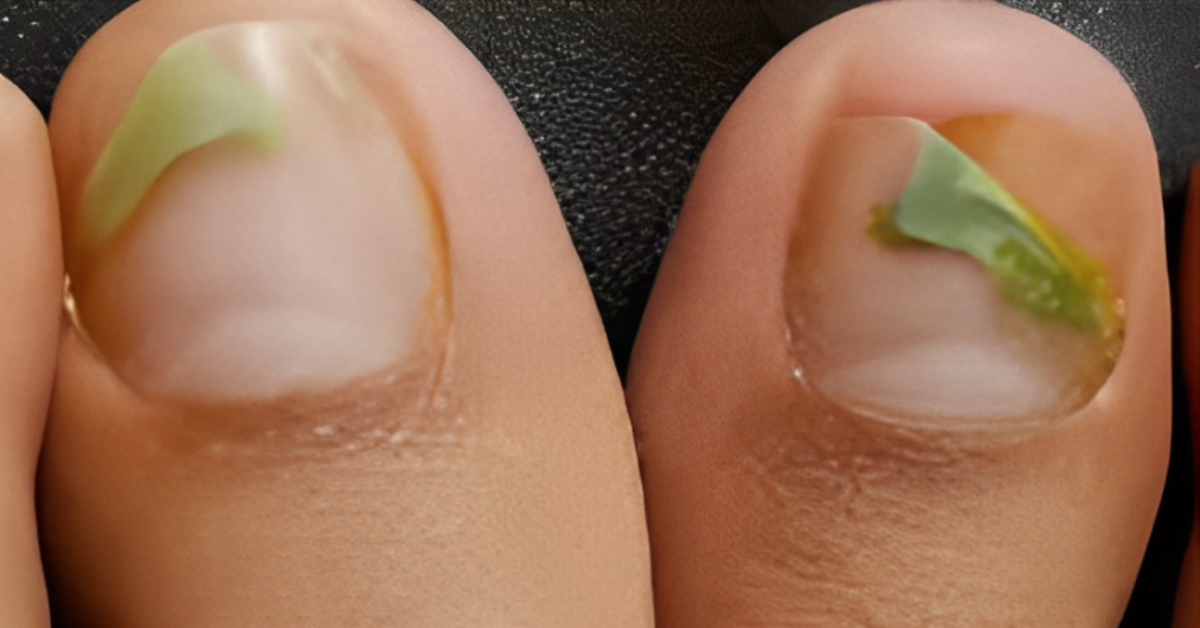How To Get Rid of Green Nail Fungus?

Experiencing the unsettling sight of green nails can be concerning, but understanding the causes and treatment options can help ease worries. Green nail syndrome, also known as chloronychia, is a common nail infection characterized by a greenish discoloration of the nails. This comprehensive guide will explore the causes, symptoms, diagnosis, and treatment options for green nail syndrome.
What is Green Nail Syndrome?
Green nail syndrome (GNS), or chloronychia, is a nail infection caused by the bacterium Pseudomonas aeruginosa. This bacterium thrives in moist environments and produces distinctive green pigments, leading to the characteristic discoloration of the nails. GNS can affect both fingernails and toenails and is often associated with onycholysis, where the nail becomes separated from the nail bed.
Causes and Risk Factors
Several factors contribute to the development of green nail syndrome (GNS), making it important to understand the various triggers behind this condition:
Onycholysis
- Onycholysis refers to the separation of the nail from the nail bed, creating a space underneath the nail. This separation provides an ideal environment for bacteria like Pseudomonas aeruginosa to thrive, leading to the characteristic greenish discoloration associated with GNS. Activities or occupations that involve repeated trauma to the nails, such as gardening, cleaning, or plumbing, increase the risk of onycholysis and subsequent GNS.
Damp Environments
- Pseudomonas aeruginosa, the bacteria responsible for GNS, thrives in moist environments. Exposure to water for prolonged periods, such as frequent handwashing, dishwashing, or prolonged immersion in water during activities like swimming or bathing, can create an environment conducive to bacterial growth. Individuals who work in environments with high humidity levels or have occupations that involve frequent contact with water are at increased risk of developing GNS.
Tight-Fitting Shoes
- Wearing tight-fitting shoes can contribute to nail trauma and increase the risk of onycholysis, especially in the toes. Continuous pressure on the toenails from tight shoes can cause damage to the nail plate and surrounding tissue, creating an entry point for bacteria. Activities that require wearing tight shoes for extended periods, such as athletics or certain occupations, may increase the likelihood of developing GNS.
Other Risk Factors
- Certain underlying conditions or habits may predispose individuals to GNS. For example, individuals with nail psoriasis or fungal nail infections may have compromised nail health, making them more susceptible to bacterial infections like GNS. Additionally, habits such as nail biting or picking can cause trauma to the nails, increasing the risk of onycholysis and bacterial colonization.
Symptoms and Diagnosis
The main symptom of green nail syndrome (GNS) is the noticeable greenish discoloration of the nails, ranging from shades of blue-green to dark green or bluish grey. While the discoloration is prominent, individuals may not always experience pain directly in the affected nails. However, the skin surrounding the affected nail, including the cuticle area, may exhibit signs of inflammation such as swelling, tenderness, or redness.
Diagnosing GNS is typically straightforward and primarily based on the clinical appearance of the affected nails. A healthcare professional, often a dermatologist, can readily identify the characteristic green discoloration associated with GNS during a physical examination. In some cases where there is uncertainty about the diagnosis or if additional confirmation is needed, a nail sample may be taken for culture. This involves collecting a small sample of tissue from the affected nail to identify the specific bacteria responsible for the infection.
It’s essential for individuals experiencing symptoms of GNS to seek medical evaluation and diagnosis to ensure appropriate treatment and management. Early detection and intervention can help prevent complications and facilitate prompt resolution of the infection.
Treatment Options
When dealing with green nail fungus, taking proactive steps can help alleviate symptoms and promote healing.
Here’s a detailed guide on how to get rid of green nail fungus:
Trimming the Affected Nail:
- Start by carefully trimming the affected nail to remove any detached or loose portions. This helps eliminate areas where bacteria can thrive and spread.
Keeping the Nails Dry:
- Moisture provides an ideal environment for bacterial growth, so it’s crucial to keep the affected nails as dry as possible. Avoid prolonged exposure to water and moisture, and ensure thorough drying after washing.
Topical Antibiotics:
- Applying topical antibiotics directly to the affected nails can be highly effective in treating green nail fungus. Antibiotics such as bacitracin or polymyxin B are commonly used and can help eliminate the infection when applied consistently two to four times a day.
Home Remedies:
- Home remedies can also play a role in combating green nail fungus. Diluted chlorine bleach or vinegar can be applied topically to suppress bacterial growth and promote healing. Mix chlorine bleach or vinegar with water in a ratio of 1:4 and apply it directly to the affected nails using a cotton ball or swab.
Oral Antibiotics:
- In more severe cases of green nail fungus, oral antibiotics may be necessary to eradicate the infection. Your healthcare provider may prescribe antibiotics such as ciprofloxacin to address the underlying bacterial overgrowth. Follow your doctor’s instructions carefully when taking oral antibiotics and complete the full course of treatment as prescribed.
By incorporating these strategies into your nail care routine, you can effectively manage and eliminate green nail fungus. Consistency and diligence are key, so be sure to adhere to your treatment plan
FAQ:
Q: How to get rid of green nail fungus fast?
A: Trim the affected nail, keep it dry, and apply topical antibiotics regularly.
Q: How to get rid of green nail fungus at home?
A: Keep the affected nail dry and apply topical antibiotics or use diluted chlorine bleach or vinegar.
Q: How to get rid of green nail fungus naturally?
A: Use natural remedies like vinegar or diluted chlorine bleach to suppress bacterial growth.
Q: How to get rid of green toenail fungus?
A: Treat green toenail fungus by keeping the affected nail dry and applying topical antibiotics or natural remedies.
Q: First stage early stage fingernail fungus from acrylic nails
A: Treat early-stage fungal infections resulting from acrylic nails by keeping the affected nail clean, dry, and applying topical antifungal agents as needed.
Conclusion
In conclusion, gaining a comprehensive understanding of green nail syndrome (GNS) and its available treatment options is key to addressing concerns and effectively managing the condition. Whether going for professional treatment or exploring home remedies, taking proactive steps to tackle GNS can lead to healthier nails and provide peace of mind. If you suspect you may have green nail syndrome, don’t hesitate to consult a healthcare professional for personalized advice and guidance on the best course of action tailored to your needs. Your journey to healthier nails begins with seeking the support and expertise you deserve.

Leave a Reply